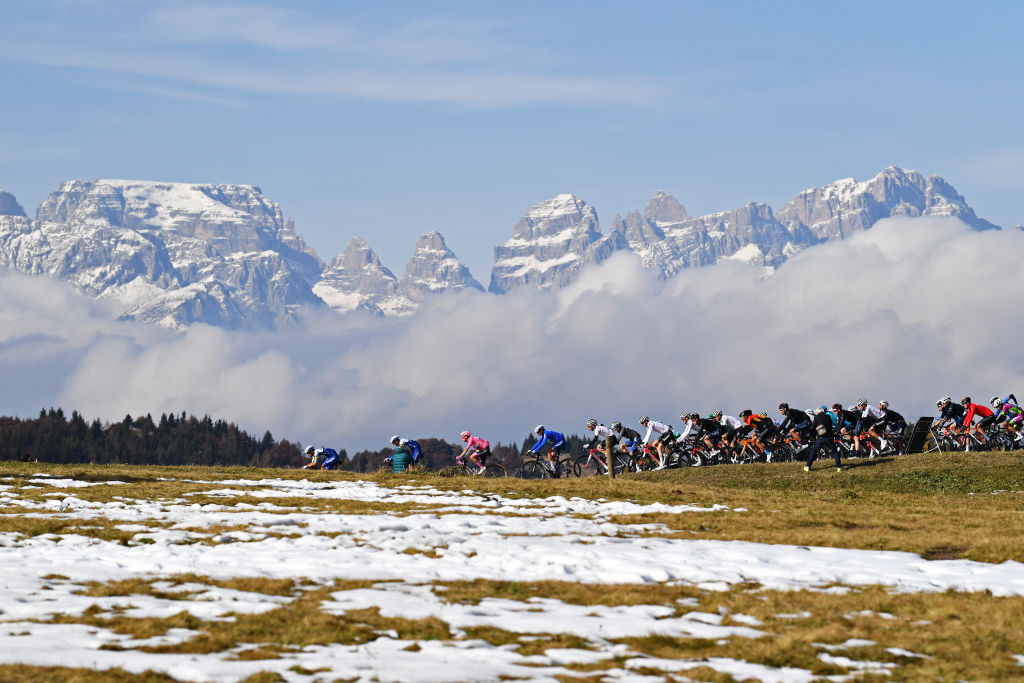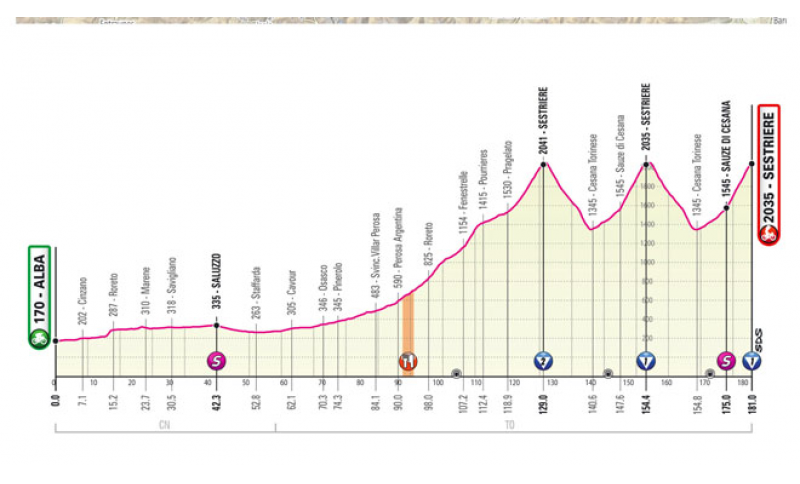Giro d'Italia: French COVID-19 rules mean Agnello and Izoard cut from stage 20
Revised stage to climb to Sestriere three times on easier roads

COVID-19 restrictions in France have forced the organisers of the Giro d'Italia to massively change Saturday's final mountain stage to Sestriere.
The race will no longer climb the 2744m-high Colle dell'Agnello and cross into France for the Col d'Izoard, instead climbing to Sestriere three times.
The new 181-kilometre stage will include around 4,000 metres of climbing on wider, faster roads instead of the 5,500 vertical metres of the original 198km route.
The loss of the Colle dell'Agnello means Thursday's stage 18 over the Passo dello Stelvio – the Cima Coppi – is likely to be the decisive high climb of this year's Giro d'Italia.
"We're definitely going up the Stelvio [on stage 18] but we've got to change the penultimate stage," Giro d'Italia race director Mauro Vegni announced on Italian television after stage 17.
"The French authorities have withdrawn the permission for the race to go on their roads due to the new anti-COVID-19 crowd rules. So we can't climb the Colle dell'Agnello, the Izoard and the climb of Montgenèvre.
"I can confirm the rumours that we'll climb up to Sestriere three times, once from Pragelato [east] and then twice from the Susa/Cesena Torinese [west] side."
The latest race content, interviews, features, reviews and expert buying guides, direct to your inbox!
Earlier in the day, Arnaud Murgia, Mayor of Briançon (through which the GIro was due to pass) announced that the Interministerial Crisis Centre (CIC) decided not to allow the race to pass through his town, noting that he was "sad and disappointed" by the news and had fought for months to host the race.
A mooted plan B for the stage had included a passage of the dirt road of the Colle delle Finestre before a finish in Sestriere, last used in 2018 where Chris Froome attackede to win the race. However, the road has not been prepared after recent snow falls, and bad weather could have lead to the cancellation of the whole stage.
Vegni took the safe option and three climbs up to Sestriere on wide main roads will ensure the stage goes ahead even in the case of worsening weather. The climb tops out at just over 2,000 metres of altitude, in contrast to the 2,733 of the Agnello and 2,360 of the Izoard.
"The new stage gives us the guarantees that it can be held if there's bad weather," Vegni said. "We haven't been able to create the amount or difficulty of climbing but there will still be around 4,000 metres of climbing."
Vegni said he was surprised that riders had not tried to attack during stage 17 to Madonna di Campiglio, suggesting the changes to stage 20 mean that stage 18 over the Stelvio is the only real chance to revolutionise the race and take the leader's maglia rosa from João Almeida (Deceuninck-QuickStep).
"I don't want to be a directeur sportif but I was surprised that nobody attacked today," Vegni said.
"Perhaps, as we say, they simply 'didn't have it', or they haven't realised that they only really have tomorrow (Thursday) to make a difference and try to shake-up the Giro. Three times up to Sestriere is hard but if Almeida gets through the Stelvio stage, it'll be difficult to attack him."
A new stage profile

RCS Sport later confirmed the route change, releasing a new stage profile along with details of the revamped stage 20.
The revamped stage 20 should now follow a flat opening from Alba to Pinerolo before gradually climbing to the base of Sestriere and up the climb from the east (9.2km at 5.4 per cent) before looping round to tackle it twice from the west (11.4km at 5.9 per cent).
"In the light of decree no. 2020-1262 of 16 October 2020 by the Prefect of the Hautes Alpes concerning the anti-COVID regulations, published in the Official Journal on 17 October 2020, the route of Stage 20, Alba – Sestriere, has changed, leaving out the passage through French territory," a statement from RCS Sport read.
The new stage 20 will be, "an Alpine stage featuring over 3500m in vertical elevation," the statement continued. "From Alba the route goes to Pinerolo across the plain through medium-wide and straight roads. Then the climb begins for the first passage through Sestriere (the riders will not pass over the finish line).
"A descent to Cesana Torinese follows, before climbing back up to Sestriere through Sauze di Cesana. The route then crosses the finish line, where a GPM (KOM) is assigned. The riders descend again to Cesana Torinese for a second lap of the circuit before an uphill arrival in Sestriere.
"The last few kilometers are all on the sp.215 with a medium-wide and well-paved carriageway. Of note is a short tunnel (100m) in Grangesises and a small roundabout 300m from the finish. The 250m finishing straight is on 7m wide asphalt."

Stephen is one of the most experienced members of the Cyclingnews team, having reported on professional cycling since 1994. Before becoming Editor-at-large, he was Head of News at Cyclingnews. He has previously worked for Shift Active Media, Reuters and Cycling Weekly. He is a member of the Board of the Association Internationale des Journalistes du Cyclisme (AIJC).
